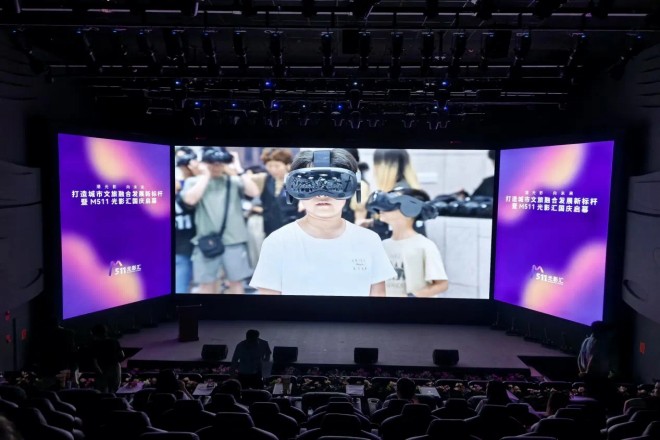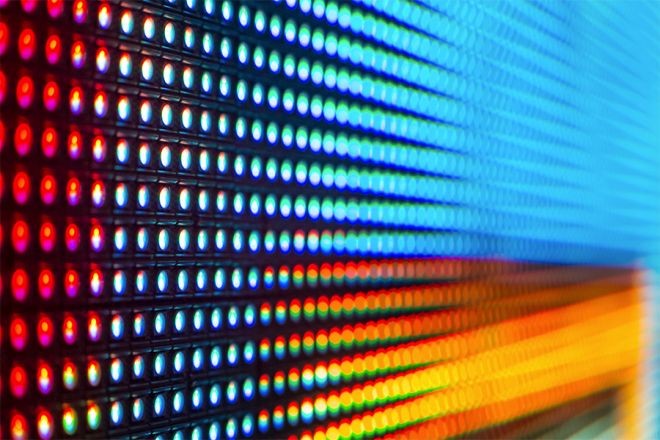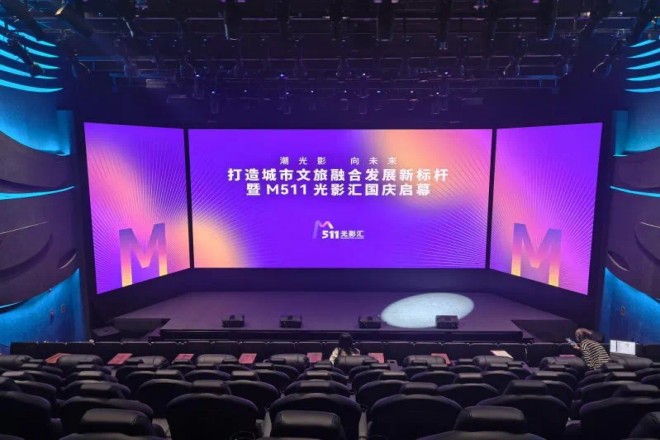Introducción

pantallas LED are everywhere in our lives. They shine in the streets and alleys, bringing us information and entertainment. But have you ever noticed that after using them for a long time, they seem to lose their brillo?
What’s going on, and what should I do? Don’t worry; this article will take you through it all and provide some tips to keep the LED display bright.
1. Understand the basic concepts of LED display brightness attenuation
LED display brightness attenuation refers to the gradual reduction of the luminous intensity of the LED display during long-term use due to various factors such as the aging of the semiconductor materials inside the LED lamp beads, the quality degradation of the packaging process, and the impact of the working environment.
This phenomenon is an inevitable part of the use of LED displays, but its progress can be delayed through a series of measures.
Brightness attenuation has a significant impact on the performance of LED displays, specifically in the following aspects:
- Reduced display effect:
As the brightness gradually decreases, the overall display effect of the LED display will be affected, and the brightness and contrast of the picture will decrease, thus affecting the audience’s viewing experience.
- Distorsión de color:
Since the color of the LED display is determined by the three colors of red, green, and blue LED beads when the brightness of one or more of the LED beads attenuates, the color of the display may appear. Deviation affects the realism and beauty of the picture.
- Vida útil reducida:
Brightness attenuation is an important sign of the shortened service life of LED displays. As the brightness gradually decreases, the performance of the display will gradually decrease until it cannot meet the usage needs. At this time, it may be necessary to replace the display with a new one or perform maintenance and repair.
2. 5 main factors that reduce the brightness of LED displays

1). Light source aging:
LED light sources are just like the light bulbs in our homes; they will dim after being used for a long time.
This is because the luminescent material inside the LED will gradually age over time, the luminous efficiency will decrease, and the brightness will naturally decrease.
Just like people’s physical functions will decline as they age, LED light sources also have their “life.”
Different brands of LED light sources vary greatly in quality. High-quality LEDs, made with exquisite materials and exquisite workmanship, are like well-maintained cars.
Although they will age, they will age much more slowly. And low-quality LEDs may be like a car that has not been properly maintained. It will become dull after a short period of use.
2). Environmental factors:
If the LED display screen works in a high temperature environment for a long time, just like when a person is exposed to the sun in the hot summer, it will accelerate aging.
Because high temperatures will accelerate the degradation of materials inside the LED, the brightness will drop faster.
In addition, too high humidity is like putting a wet coat on the LED display, which not only affects heat dissipation but may also cause internal electronic components to become damp, leading to performance degradation and brightness attenuation.
Finally, dust and pollutants in the air will also affect the brightness of the LED display. They are like fine sand, which will continue to wear the surface of the LED display and even penetrate into the interior, affecting the luminous effect. Just like our skin, if exposed to a polluted environment for a long time, it will become rough and dull.
3). Power supply and driver:
Just like the voltage at home is unstable, and the light bulbs will flicker, the same goes for the LED display. An unstable power supply will cause the LED lamp beads to emit unstable light, accelerate aging, and reduce brightness.
The drive circuit is like the brain of the LED display, controlling the light emission of the lamp beads. If the drive circuit is aged, just like the brain’s response is slow, the brightness of the LED display will also be affected.
4). Usage habits:
Just like when we stare at the mobile phone screen for a long time, our eyes will get tired. Running the LED display at high brightness for a long time will also “fatigue” the lamp beads and accelerate their aging.
In addition, frequent switching on and off will also accelerate the decline in brightness, just like constantly opening and closing a car door, which will have an impact on the circuit and lamp beads of the LED display. Although each impact may be small, the cumulative impact will accelerate aging.
5). Manufacturing process:
Packaging technology is like putting a layer of “protective clothing” on LED lamp beads, which can protect it from the external environment if the packaging technology is not up to standard, just like a hole in the “protective suit,” the LED lamp beads will be exposed to harsh environments and accelerate aging.
The selection of materials, such as LED lamp beads and circuit boards, also directly affects their lifespan. Just like when we buy clothes, clothes made of good materials are more durable. The same is true for LED displays. High-quality materials can extend their service life.
To sum up, the brightness attenuation of LED display screen is a complex process and is affected by many factors.
In order to extend the service life of LED displays, we need to start from many aspects, including selecting high-quality LED light sources, maintaining a good working environment, rationally adjusting usage habits, and selecting products with excellent manufacturing technology. In this way, our LED display screen can stay bright and new for a long time, just like a new car.
3. 3 methods for detecting and evaluating brightness attenuation
1). Detect brightness decay
- Measure directly:
If you want to know whether the brightness of an LED display or lamp has changed, the most direct way is to measure it with a professional gadget such as a photometer. Test at different time points and compare to see if the brightness has decreased.
- Use the model to guess:
Scientists have also developed a mathematical model of brightness attenuation. As long as you input some basic information about the LED, such as initial brightness and operating current, you can predict how bright it will be in the future. However, this model must be reliable.
- Accelerated aging test:
There is also a faster method, which is to add some “pressure” to the LED, such as increasing the temperature and increasing the current, so that it ages faster.
In this way, we can know the brightness attenuation situation faster, but it should be noted that the results of this method may be slightly different from the actual situation.
2). Evaluate brightness falloff
- Luminous flux maintenance rate:
This indicator is like the “youth index” of LED, indicating how much initial brightness it can maintain after being used for a period of time. A high index indicates that the LED ages slowly.
- Brightness attenuation rate:
This indicator is like the “aging rate” of LED, indicating how much its brightness drops after being used for a period of time. If it falls less, it means the LED is durable.
- Failure standard:
There is also a “bottom line,” that is, when the brightness decays to a certain level, the LED can no longer be used. This bottom line varies from application to application and must be determined based on actual conditions.
3). Luminance attenuation data
- Compare the initial value:
When interpreting the data, first look at how bright the LED was at the beginning, and then compare it with the subsequent data to know whether the brightness has decreased.
- Look at the trend:
You can also draw a graph to see how the brightness decreases step by step. In this way, we can understand the aging process of LED more intuitively.
- Think about it based on reality:
Finally, don’t forget to consider it based on actual application scenarios. Different occasions have different requirements for brightness. Some may have bright spots, while others may have dark spots. Therefore, when interpreting data, you must consider whether the “bottom line” meets actual needs.
4. Strategies to extend the life of LED displays

1). Environmentally friendly and carefully cared for
- Moderate temperature and humidity:
LED displays prefer a room temperature of around 25°C. It should not be too cold or too hot, and the humidity should not be too high. Just keep it within a comfortable range. When the weather is too hot and humid, remember to let it rest for a while.
- Limpieza periódica:
Outdoor display screens must be cleaned regularly. Too much dust may affect viewing. Use a soft brush or vacuum cleaner to gently sweep; do not rinse directly with water!
2). Power-driven and stable
- Choose the right fuente de alimentación:
A stable power supply is the lifeblood of the display. Remember to use a regulated power supply to prevent voltage fluctuations from damaging it.
- Driver maintenance:
The driver circuit also needs to be checked regularly to see whether it is loose or broken. If there’s a problem, fix it immediately; don’t put it off.
3). Use the screen rationally and have a longer lifespan
- Brillo moderado:
Don’t always leave the display on at full brightness. High-brightness operation accelerates aging. Let it “lower” once in a while, and it will last longer.
- There is a way to switch the screen on and off. There is a way to switch the display on and off:
first turn on the computer and then turn on the screen, first turn off the screen and then turn off the computer. There are several minutes between switches to protect the display from impact.
4). Regular inspection and timely maintenance
- Light source status:
Check the LED light source regularly, including brightness, color, and uniformity. Fix problems promptly when you find them, and don’t let small problems turn into big troubles.
- Aging light source:
LED light sources will age after being used for a long time, resulting in reduced brightness and color distortion. If you notice signs of aging, replace it with a new one quickly to keep the display in optimal condition.
Conclusión
Okay, after talking so much, I believe you have a deeper understanding of the causes and solutions to the brightness attenuation of LED displays.
In fact, it is not difficult to maintain the brightness of the LED display screen. The key is to take good care of it. I hope these tips can help you keep your LED display looking brilliant for a long time.
Finalmente, si quieres conocer más información sobre las pantallas LED, Por favor póngase en contacto con nosotros.
